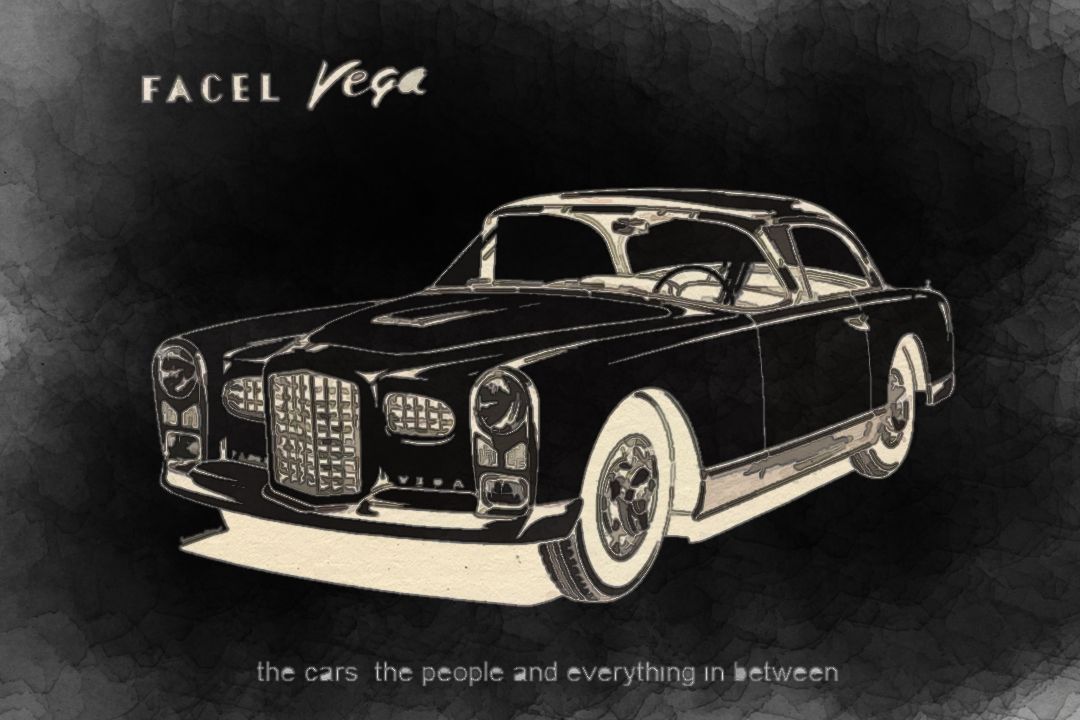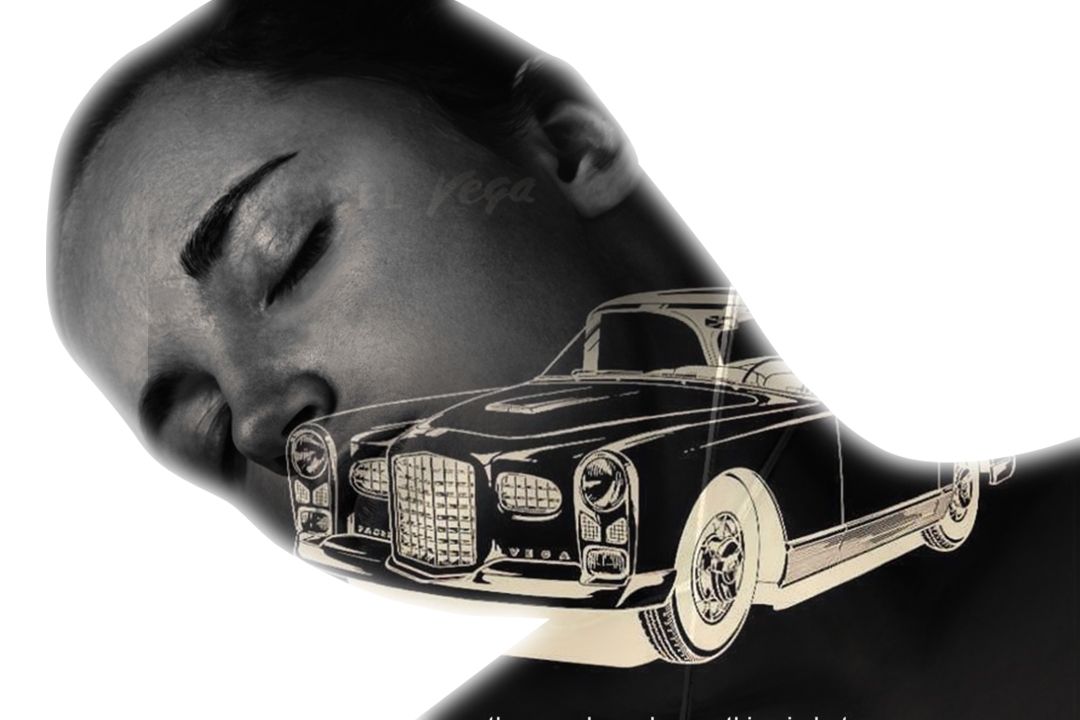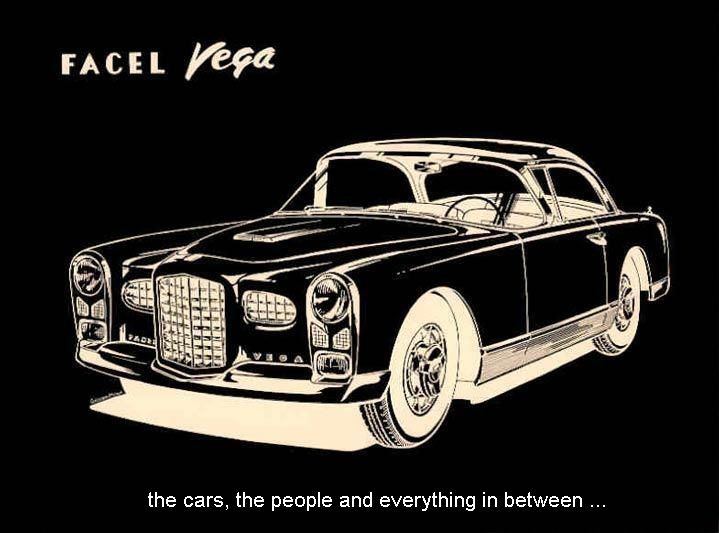The Facts of Life! (and Death)

Facel Vega - The Car, The People, and the Death Between
In the twilight of existential contemplation, the Facel Vega stood as a solemn testament to the transient nature of life. Once a symbol of luxury and opulence, the car now harboured the spectral residue of a fateful moment when reality crystallized. The photograph, frozen in time, captured the very instance when the weight of life became palpable, much like the fatal drive that claimed Albert Camus.
As the scene faded into the recesses of memory, the mournful whispers of;
Our virtues and our failings are inseparable, like force and matter. When they separate, man is no more.
— Nikola Tesla (1856-1943)
The Facel Vega, both witness and catalyst, held within its sleek lines the essence of a man no more. Camus, the philosopher of the absurd, was now a spectral passenger in the car that bore witness to his tragic demise.
A lone figure emerged from the shadows, a sad fan haunted by losing a cultural figure so intertwined with the car's narrative. The Facel Vega became more than a vehicle; it embodied the convergence of life, death, and the human experience. Like so many others, the sad fan found solace in the shared grief over the departure of a mind that navigated existence's complexities.
The profound truth of Camus' philosophy manifested in the rustling leaves and the fading sunlight as if the very fabric of existence was contemplating its fragility.
The sad fan pondered the necessity of belief amid the Facel Vega's silent contemplation.
It is necessary to believe in God, and if there is no faith, there is no place to hold its hype, and look, look, look lonely, alone with his conscience.
— Anton Chekhov (1860-1904)
The car stood as a silent cathedral, a sanctuary for contemplation where faith and doubt danced in the shadows cast by its iconic silhouette.
Yet, amid the contemplation and mourning, a call to action lingered;
Men must live and create. Live to the point of tears.
— Albert Camus (1913-1960)
The Facel Vega, bearing witness to the fragility of life, implored those who grieved to channel their sorrow into creation to live passionately despite the tears that marked the passage of time.
As the sad fan gazed upon the Facel Vega, the car became a vessel of memory and inspiration. In the convergence of the vehicle, the people, and the inevitable dance with death, a narrative unfolded—one that transcended the competition for recognition and instead sought to capture the essence of what it truly means to live in the shadow of mortality.
The solemnity of the moment deepened as the sad fan traced the lines of the Facel Vega. The car, once a symbol of sleek design and performance, now stood as a silent witness to the fragility of human existence. The headlights, once bright and daring, now cast a subdued glow that seemed to flicker in harmony with the echoes of Camus' words.
The sad fan, a mortal grappling with the weight of loss, became a character in this story. The Facel Vega, with its timeless elegance, served as a backdrop to the human drama playing out in the shadows. The convergence of the car, the people, and the spectre of death created a tableau that transcended the boundaries of time and space.
The sad fan found a quiet corner beside the Facel Vega as the night deepened. The car, now a relic of a bygone era, seemed to invite reflection and introspection. In the peaceful silence, the sad fan sought solace in the memories woven into the fabric of the car's existence. It was a communion with the past that transcended the limits of individual sorrow.
In the reflective solitude, the words of Camus reverberated once more:
Our virtues and our failings are inseparable, like force and matter. When they separate, man is no more.
— Nikola Tesla (1856-1943)
The sad fan, overwhelmed by the weight of these words, felt the interplay of virtues and failings within the chambers of their own heart. The Facel Vega, a vessel for the human experience, stood as a silent witness to the complexities of existence.
The night wore on, and the sad fan's contemplation deepened. The Facel Vega, once a symbol of speed and motion, now stood in quiet repose. It was a frozen moment, much like the memories that lingered in the recesses of the sad fan's mind. The convergence of the car, the people, and the enigma of death created a tableau that demanded introspection.
During this silent drama, the sad fan grappled with faith.
It is necessary to believe in God, and if there is no faith, there is no place to hold its hype, and look, look, look lonely, alone with his conscience.
— Anton Chekhov (1860-1904)
The words resonated with the hallowed air surrounding the Facel Vega. Once a symbol of earthly pleasures, the car became a conduit for spiritual contemplation.
The sad fan, bathed in the dim glow of the car's headlights, felt a profound connection to something greater than themselves. The Facel Vega, with its sleek curves and timeless design, became a vessel for transcendence. The convergence of the car, the people, and the silent dialogue with faith created a tapestry that spoke to the intricacies of the human soul.
As the first light of dawn painted the horizon, the sad fan felt a stirring within. The call to action, the imperative to create. The Facel Vega, once a passive observer, seemed to come alive in the dawn's embrace. It beckoned the sad fan to embrace life's vitality and channel the grief into a creative force that transcended the limitations of mortality.
With a renewed sense of purpose, the sad fan stood beside the Facel Vega, ready to embark on a journey of living and creating. Now a symbol of resilience and inspiration, the car witnessed the transformation unfolding in the predawn light. The convergence of the vehicle, the people, and the promise of a new day created a tableau of hope and renewal.
Ultimately, the short story unfolded as a tapestry woven with existential contemplation, grief, faith, and the imperative to live passionately. The Facel Vega, with its silent elegance, stood as a symbol of the interconnectedness of life's complexities. Having traversed the depths of introspection, the sad fan emerged on the other side with a newfound appreciation for the beauty inherent in the convergence of the car, the people, and the ever-present dance with mortality.

The planksip Writers' Cooperative is proud to sponsor an exciting article rewriting competition where you can win over $750,000 in prize money.
Figures of Speech Collection Personified
Our editorial instructions for your contest submission are simple: incorporate the quotes and imagery from the above article into your submission.
What emerges is entirely up to you!
Winners receive $500 per winning entry multiplied by the article's featured quotes. Our largest prize is $8,000 for rewriting the following article;

At planksip, we believe in changing the way people engage; at least, that's the Idea (ἰδέα). By becoming a member of our thought-provoking community, you'll have the chance to win incredible prizes and access our extensive network of media outlets that will amplify your voice as a thought leader. Your membership truly matters!


